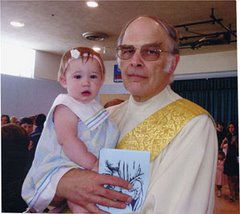Mark 1:40-45
Like other professions, the profession
of medicine has a certain culture. During medical school and
residency, there is something called roundsmanship, in which
physicians in training try to demonstrate that they know more about
something than everyone else. Long after training, this surfaces in
conferences and other gatherings, when otherwise mature physicians
still try to prove that they know more than the rest of the group.
Another part of the culture is described by the statement, “See
one, do one, teach one.” This means that after you watch a certain
procedure, you should be able to do it, and if you can do it, you
should teach it to someone else. Obviously this doesn't hold for
every procedure, but again, it's part of the culture.
As I was thinking about today's
Gospel, I was reminded how Mark's story of Jesus seems to be one
miracle after another, until Jesus goes down to Jerusalem and his
passion. Mark has very few parables, no beatitudes, no collections
of Jesus' sayings. It is the oldest gospel, and some people think it
is the actual recollections of Peter, dictated to Mark. It is in
Mark that Peter's mistakes and blunders are most obvious; the other
writers tend to cover them up. So why is Mark telling us about all
these miracles? Today we hear yet another story, the healing of a
leper.
There are several things about this
short story to notice. First of all, the leper approaches Jesus. As
you heard in the first reading, they had laws in those days about
lepers. One was that they were supposed to avoid people who didn't
have leprosy. They were to live outside the city. Thy had to cover
their faces. They couldn't have jobs and depended on the charity of
relatives to survive. If they were walking on a road and healthy
people were to come along, the lepers were to get off the road. So
this leper is clearly in violation of all these rules. By Jewish
standards he is not only a leper, he is a sinner.
When we read the English translation,
it is kind of whitewashed. Some authorities say that the leper says
something like “If you will it, you can declare me clean.” That
kind of sounds like someone who would defy the laws about leprosy,
doesn't it? Our leper has reached the point where he doesn't care
what happens to him. He's at the end of his rope. And notice, he is
challenging Jesus. If by chance someone who was declared a leper did
get over his skin disease, and remember that many lepers had other
problems, probably a little psoriasis here and there – the leper
had to go to the priests, who would inspect him and then if no sign
of leprosy was seen, declare him clean. Our leper is not only asking
Jesus to cure him, but also to carry out the task of a priest.
It says Jesus was filled with
compassion, but some manuscripts say that Jesus “snorted in anger”
which is a very different picture. I think it is because he is angry
with a system that treats people the way the leper has been treated.
The least the society could do would be to provide food and shelter
for these unfortunates. Instead, the Jewish society, convinced that
you got leprosy because you were a sinner, shunned and ostracized
lepers.
Jesus says, “I am willing, I declare
you clean”, and demonstrates to all those who are watching that the
leper is now cured by touching him. To touch a leper was to become
unclean yourself, but if you touched a healthy person, you remained
clean. When Jesus touched the leper, he invites him back into
society.
Finally, Jesus tells the leper to go
to the priest and follow the Jewish rituals for re-entry into
society. Then he adds “as a testimony to them”. Who is them?
Perhaps it is all of those who have shown no compassion for the
leper. Words would probably not move them, but seeing the person
they had kicked out of town returning with a clean bill of health –
that might finally shame them into reconsidering how they should deal
with the sick and the lame and the possessed among them.
And the last thing to consider about
this story is what happens to Jesus. Jesus said, “I am willing.”
And he must have known that his actions would lead to what happened.
This was yet another miracle, and the consequence was that Jesus and
the leper changed places; now Jesus couldn't enter the towns, while
the leper returned to his former place in society. It seems as
though this foreshadows the Passion, in which Jesus in some way takes
our place.
So what does all this have to do with
“see one, do one, teach one?” One of Mark's major themes is that
the kingdom of God is at hand. The kingdom is here, you can enter
it, you don't have to wait around to die. How do you enter it?
Jesus shows you how. Jesus shows that in the kingdom of God there is
no illness, no death, no demonic possession. In the kingdom there is
no blindness, no paralysis, no withered limbs. Whenever Jesus runs
across these sorts of things, he fixes them. But in the kingdom
there is no hunger, and Jesus feeds the 5000. In the kingdom there
are no barriers between people, and Jesus touches the leper, heals a
gentile slave and a woman who has a disease which makes her unclean.
And in the kingdom there are no people who abuse their authority, and
Jesus heals the leper as a testimony to those in authority, who see
sin as the cause of disease.
And we are not to stand in awe at yet
another miracle. Jesus expects us to imitate him. If we are people
who bear his name, we have to do everything in our power to heal the
sick, to break down barriers between people, and to insist that
justice be done. If we go where our Lord and Master has gone, we
will have entered the kingdom of God.



































